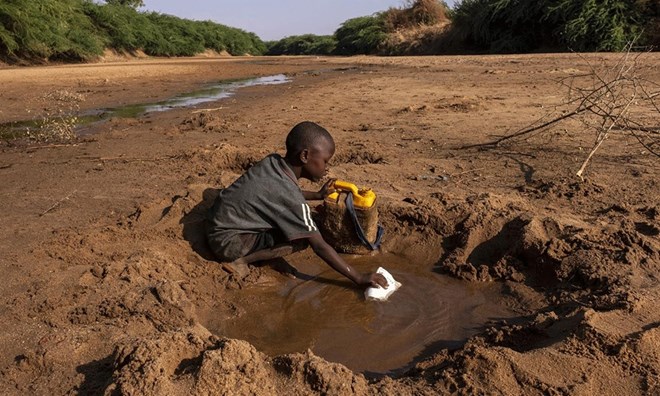
Wednesday October 26, 2022
BY ROBYN WHITE

East Africa—particularly Ethiopia, Somaliland, Somalia, and Kenya—is in the middle of one of the worst droughts the region has ever seen after five consecutive failed rainy seasons. Some scientists have already forecasted a sixth failed rainy season next year. This has meant the land is barren and dry, causing serious consequences to people's livelihoods.
Oxfam has predicted one person could die every 48 seconds due to the drought. Many experts believe that the drought is a direct consequence of climate change.
The study published by AGU and the University of Bristol on October 19 was authored by Dr. Markus Adloff—researcher in the School of Geographical Sciences in Bristol—and Dr. Katerina Michaelides, associate professor in dryland hydrology at the University of Bristol.
It found that improved groundwater management could also hold the key to combating the severe impacts of the drought.
While rainfall is declining in East Africa's drylands, scientists found that the total underground water storage seems to be increasing. This presents a "much-needed glimmer of hope," according to a University of Bristol release.
"Multiple consecutive drought seasons such as what we are seeing today are catastrophic for communities so strongly reliant on rainfall. Water and food scarcity is compounded with every failed rainy season, and resources and livelihoods have no opportunity to rebound. Thus, very quickly rainfall scarcity results in failed crops which then leads to food scarcity and food scarcity becomes a food crisis, ultimately leading to famine. Equally, water shortages result in illness and death for both animals and, sadly, humans, especially children," Michaelides told Newsweek. "[This] may potentially provide a much-needed lifeline to water-insecure communities. Our research points to a nuanced aspect of rainfall changes which bring a positive twist to an otherwise gloomy outlook."
Analysis by scientists found that while total rainwater from the rainy season, known as "long rains," is decreasing, it is rising in the other rainy season, known as "short rains."
This could be because, while rains are decreasing during the typically wet months of March, April and May, heavy rainfall is becoming more common in October, November, and December.
Michaelides said this was important to note, as heavier rainfall in these dryland environments produces runoff and streamflow in otherwise dry river beds. This more readily percolates through the soil, whereas light rainfall tends to evaporate more quickly back into the atmosphere before it can percolate deep underground.
"So the intensity of rainfall within a rainy season may be actually more important for groundwater replenishment than the total amount of rainfall," Michaelides said.
These findings stress how important it is to continue research into the changes in rainfall characteristics, she said.
This study is just the beginning of finding out whether this groundwater could be useful to communities.
The next step would be to set up groundwater surveys across the region to look into it further.
"Once these assessments are complete, and if they find a positive outlook, it stands to reason that international banks, NGOs, donors, and governments of East Africa can work together to support the development of this precious resource in close consultation with rural communities who depend on it the most," Michaelides said.